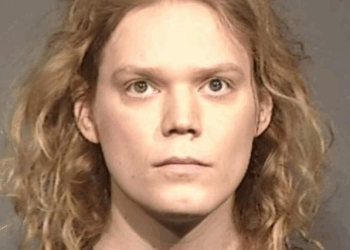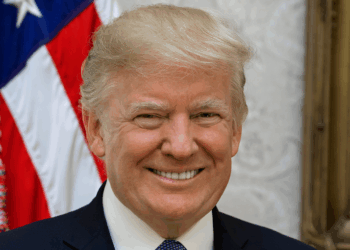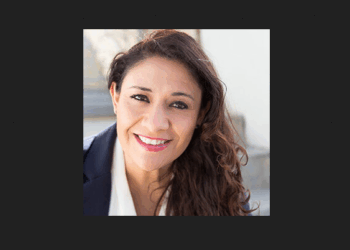The violence and political extremes that plague our nation are not the result of making everything “political” but rather from being insufficiently political about what’s right in front of us.
The most common explanation for America’s political violence problem is that we’re hyperpoliticized, that we’re too obsessed with politics. But this diagnosis has it backward. Americans aren’t too political—we’re not political enough. Today’s violence is the latest manifestation of our failure to practice politics locally.
Americans are not only polarized; we’ve turned inward on ourselves. As a member of Gen Z, I see my peers express strong political opinions and follow national politics religiously, but how many of us know what it means to engage with our communities? Most of us have never witnessed our parents engaging with neighbors or working through community problems, so we never learned how to do it ourselves.
This civic atrophy isn’t accidental. The institutions that traditionally taught Americans how to come together—neighborhood associations, local councils, churches, community groups—have eroded over decades. Real political power seems concentrated only at the highest levels of government, far from where ordinary citizens can meaningfully participate. Tocqueville called this kind of government “an immense tutelary power,” one that handles everything important for its citizens, leaving the rest of us to forget what real influence in our world feels like aside from a vote in an election here and there.
This “power” operates through what Vincent Ostrom called “New Newspeak,” the reduction of political discourse to grand abstractions like “Society,” “the Nation,” and “the Government” that strip away the particular, local contexts where citizens could conceivably exercise meaningful agency. When we speak only in terms of sweeping categories like “the Poor,” “the Environment,” and “America as a Whole,” we lose sight of the specific problems facing our own locale, where democratic participation could make a significant difference. These problems were once communicated by local news, the collapse of which has only amplified the prevalence of New Newspeak and the nationalization of our politics.
With such enormous, abstract problems constantly in view, we naturally conclude that the only problems worth paying attention to are those solvable only by an elite class of technocrats and experts, forgetting that we can still address real problems ourselves in our own communities. When we hand authority over to this class, and the only problems we pay attention to become big, impossible ones instead of local, manageable ones, we become in Tocqueville’s words “enervated, extinguished, and stupefied.” We aren’t violently oppressed, but we feel power slipping from our hands in a way that’s more insidious.
When people feel helpless about shaping their immediate environment, they don’t bother trying. A few, feeling particularly hopeless, resort to outrage and violence. Humans are political animals who need outlets for civic engagement. When it doesn’t seem like we can exercise meaningful agency in our daily lives, that energy doesn’t simply disappear—it gets redirected into less constructive or even destructive channels. Faith is lost in the democratic process. As Tyler Robinson texted after he murdered Charlie Kirk: “Some hate can’t be negotiated out.”
The data bears this out. Support for the idea that “true American patriots may have to resort to violence to save our country” has jumped to nearly one in four Americans, particularly among Republicans. Meanwhile, younger Democrats show higher support for violence against corporate executives in the name of economic justice. Generationally, only 58% of Gen Z Americans completely reject using violence to silence offensive speech, compared to 93% of baby boomers. One study shows how support for political violence increases when people feel resentful and believe conventional political channels are ineffective at addressing their concerns.
This is what Ostrom called “a sickness of the people.” When traditional ways of exercising political agency atrophy, violence can seem like the only path to meaningful change.
The solution isn’t simple, especially when Americans are glued to screens and prefer to spend time with the people they cherry-pick, often online instead of face-to-face. But we can start rebuilding civic capacity through what Nobel laureate Elinor Ostrom called “co-production”: citizens actively delivering public services alongside government rather than being passive consumers of them.
Community policing offers one model. So do parent groups that create school gardens, improve playgrounds, and organize book fairs. The key for local government is residents actively participating in town meetings as genuine decision-makers. This is a stark contrast to the symbolic hearings where officials pretend to listen before implementing predetermined policies.
We also need better civic education. My suburban New York high school pushed us toward activism on national issues but never taught us how to engage with our own communities or tackle local problems. Instead, our assignments focused on national and international news—commenting from the sidelines rather than learning to act where we live.
This approach to rebuilding civic capacity has real potential to be bipartisan. The right has long championed civil society and mediating institutions, while the left has deep roots in grassroots activism and community organizing. Both traditions understand that connection and positive change emerges from local collaboration. And while local battles can be just as nasty as national ones if they get ideological, more often than not they provide an opportunity for people to work together on more down-to-earth and unifying issues like the summer block party or the annual lake cleanup.
Ultimately, face-to-face collaboration on immediate, shared challenges is the antidote to radicalization, polarization, and obsession with abstract battles. Give people real authority in their own communities and teach them how to use it, and they’ll rediscover what Tocqueville called the “art and science of association”—the democratic skills that each generation must learn through practice. As the Ostroms demonstrated through decades of research, people are remarkably capable of self-governance when given local opportunities to exercise it.
The alternative is a democracy that exists only on paper while people either retreat into private life or resort to extremism. Self-governance requires practice at the local level. It’s time we remembered that lesson before our democratic muscles atrophy completely. The future of American democracy hinges not on rent freezes or mass deportations but on Americans rebuilding democracy where we live.




![Hegseth Demands Fitness Requirements, Says 'Fat Troops' 'Not Who We Are' [WATCH]](https://teamredvictory.com/wp-content/uploads/2025/09/Hegseth-Demands-Fitness-Requirements-Says-Fat-Troops-Not-Who-We-350x250.jpg)






